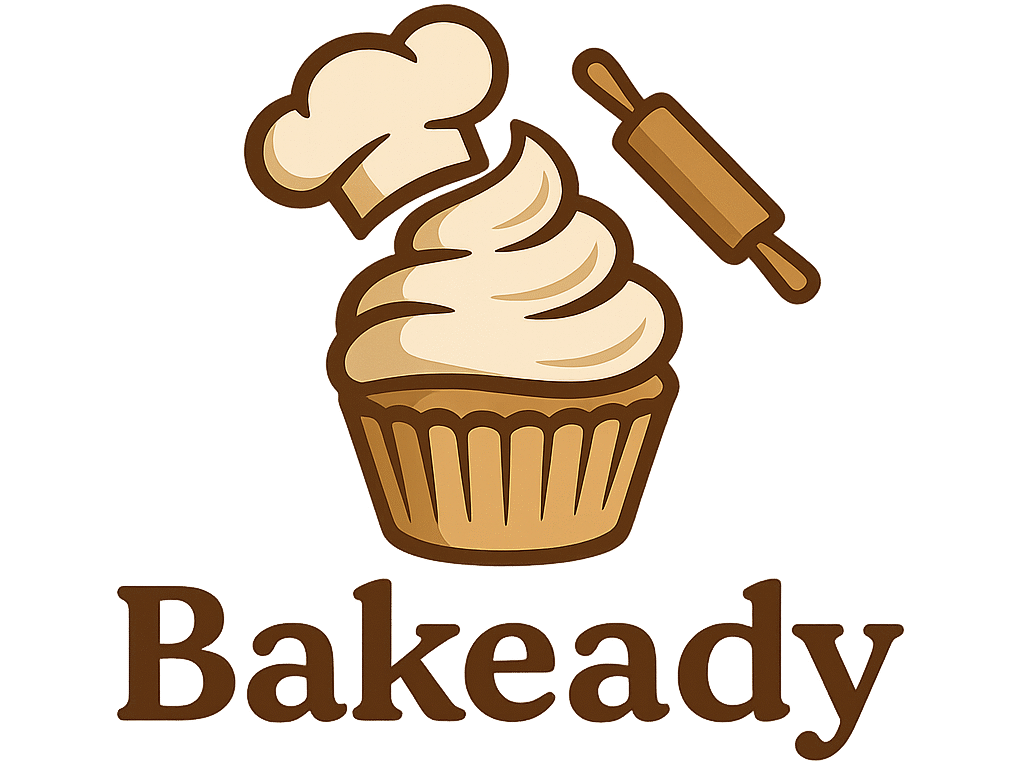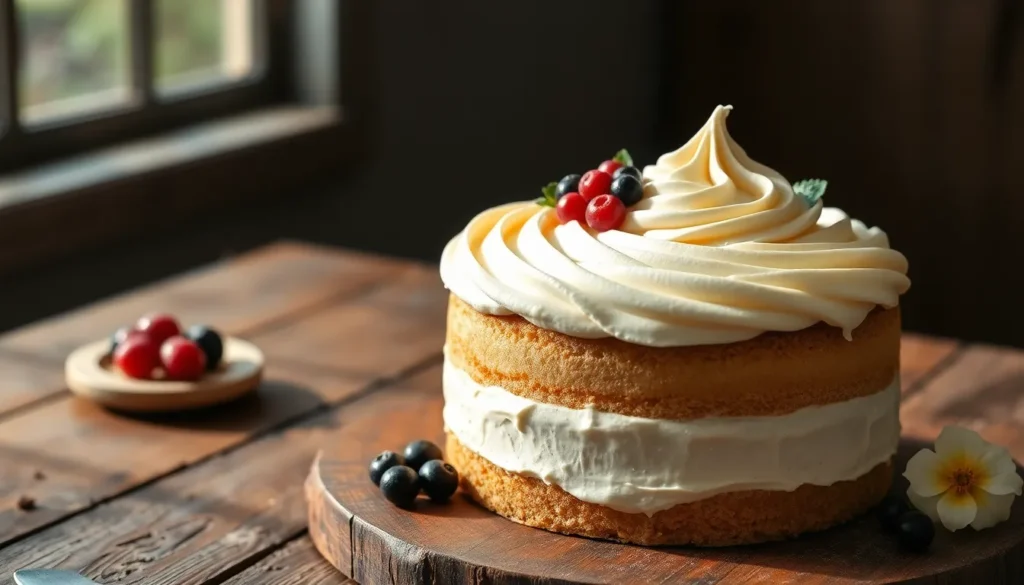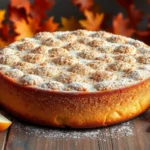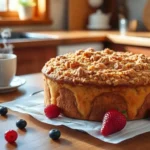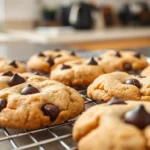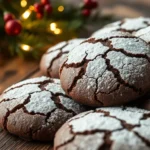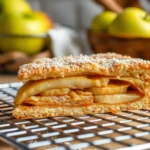When we first discovered the magic of white chocolate buttercream, our baking game changed forever. This luxurious frosting combines the rich, creamy texture of traditional buttercream with the delicate sweetness of white chocolate, creating a flavor profile that’s both sophisticated and irresistibly indulgent.
What sets white chocolate buttercream apart from its vanilla counterpart is its subtle complexity. The white chocolate doesn’t just add sweetness—it brings a velvety smoothness and slight vanilla undertone that elevates any cake or cupcake to bakery-quality status. We’ve used this frosting on everything from elegant wedding cakes to simple birthday treats, and it never fails to impress.
The best part? This buttercream is surprisingly easy to master once you know the key techniques. With just a few quality ingredients and our foolproof method, you’ll create a frosting that pipes beautifully, tastes divine, and keeps your desserts looking professional for days.
Ingredients
Creating luxurious white chocolate buttercream requires high-quality ingredients that work together to achieve that perfect silky texture. We’ve organized our ingredients into two essential categories to ensure your frosting turns out flawlessly every time.
For the White Chocolate
- 8 oz high-quality white chocolate, finely chopped
- 1/4 cup heavy cream
- 1 teaspoon pure vanilla extract
For the Buttercream Base
- 1 cup (2 sticks) unsalted butter, room temperature
- 4 cups powdered sugar, sifted
- 1/4 cup heavy cream
- 1/2 teaspoon salt
- 2 tablespoons milk (if needed for consistency)
Equipment Needed
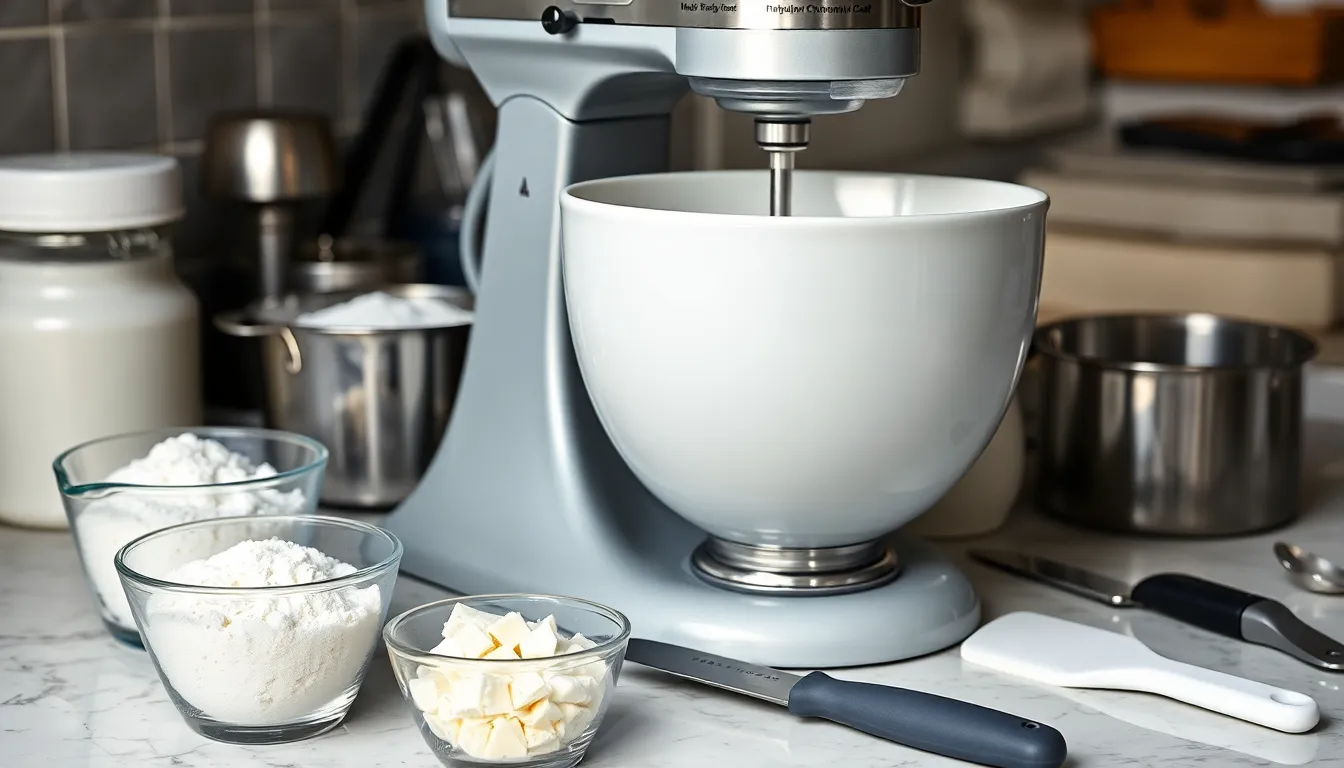
Creating the perfect white chocolate buttercream requires exact tools that ensure smooth mixing and professional results. We recommend gathering all equipment before starting to streamline the process and achieve the silky texture this frosting is known for.
Stand Mixer or Electric Hand Mixer
Our most essential tool for this recipe is a stand mixer with paddle attachment or a reliable electric hand mixer. This equipment creams the butter to pale and fluffy perfection while gradually incorporating the powdered sugar and blending the melted white chocolate seamlessly into the mixture.
White Chocolate Melting Equipment
We need either a microwave-safe bowl or double boiler setup for melting the white chocolate without overheating. Both methods prevent the chocolate from seizing or becoming grainy, which would compromise our buttercream’s smooth texture.
Chopping and Measuring Tools
Sharp knife or kitchen shears help us chop white chocolate bars or chips into uniform pieces for even melting. Accurate measuring requires either a kitchen scale for precision or standard measuring cups and spoons for consistent results.
Mixing and Application Tools
Multiple mixing bowls serve different purposes throughout the process: one for melting chocolate, another for creaming butter, and additional bowls for combining ingredients. A rubber spatula ensures we scrape every bit of mixture from the bowls while achieving thorough blending. An offset spatula becomes invaluable for smoothing the finished buttercream onto cakes and cupcakes.
Optional Enhancement Tool
Fine-mesh sieve proves helpful for sifting powdered sugar before adding it to the mixture. This extra step eliminates lumps and contributes to the exceptionally smooth consistency that makes white chocolate buttercream superior to standard frostings.
Instructions
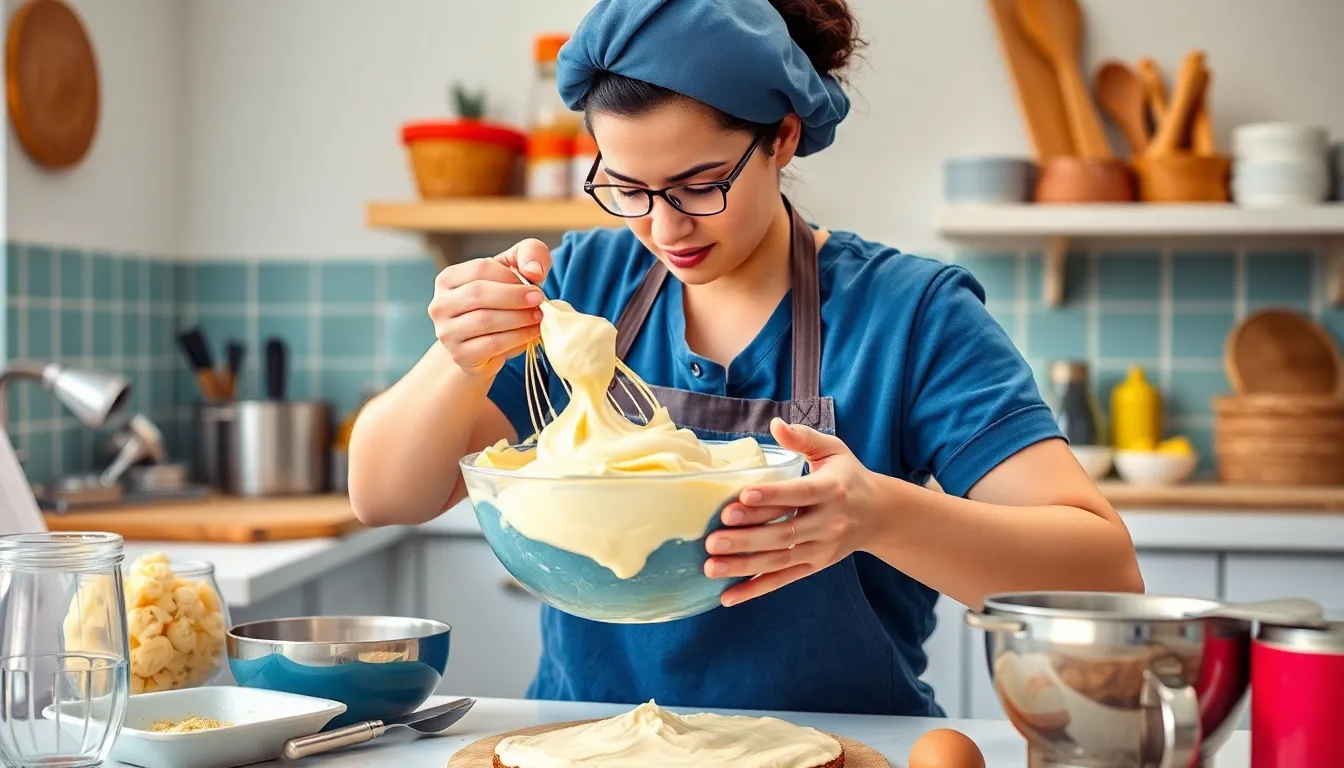
We’ll guide you through creating this luxurious white chocolate buttercream with three essential steps that ensure perfect texture and flavor. Follow our detailed process to achieve professional bakery quality results.
Prep the White Chocolate
Place your 8 oz of finely chopped white chocolate in a heat-proof bowl. Microwave in 15-second increments, stirring thoroughly between each interval until the chocolate becomes completely smooth. Double boiler method works equally well if you prefer more controlled melting. Allow the melted chocolate to cool until it no longer feels warm to the touch, as hot chocolate will melt the butter and ruin your frosting texture.
| Melting Method | Time Intervals | Key Points |
|---|---|---|
| Microwave | 15 seconds | Stir between intervals |
| Double Boiler | Continuous | Medium heat, constant stirring |
| Cooling Time | 10-15 minutes | Must reach room temperature |
Make the Buttercream Base
Beat your 1 cup of softened unsalted butter in a stand mixer until it becomes creamy and well-whipped, approximately 3-4 minutes on medium speed. Gradually incorporate the 4 cups of sifted powdered sugar, mixing on low speed initially to prevent sugar clouds. Add your 1 teaspoon of pure vanilla extract and 1/2 teaspoon of salt, then continue beating until the mixture becomes light and fluffy. Stream in 1/4 cup of heavy cream slowly while mixing to achieve the perfect consistency.
Combine and Whip
Add your cooled white chocolate to the butter mixture, mixing on low speed until just combined to prevent overmixing. Increase the mixer speed to medium and beat for an additional minute until the frosting becomes light, fluffy, and beautifully creamy. Add the remaining 2 tablespoons of milk if needed to reach your desired spreading consistency. Chill the frosting for 15-20 minutes if it becomes too soft or warm during the mixing process.
Directions for Perfect Consistency

Now that we’ve mastered the basic technique let’s ensure our white chocolate buttercream maintains the ideal consistency for smooth application and beautiful results. Perfect consistency requires attention to temperature and ingredient ratios throughout the mixing process.
Troubleshooting Thin Buttercream
When our buttercream becomes too runny we need to identify the root cause before applying the fix. Excessive liquid or a warm kitchen environment typically creates this consistency issue.
The most effective solution involves gradually adding powdered sugar in 2-3 tablespoon increments until we achieve the desired thickness. We mix thoroughly after each addition to prevent lumps from forming.
If heat causes the thinning we should refrigerate our buttercream for 10-15 minutes before remixing. This cooling period allows the butter to firm up and restore the proper texture without compromising the white chocolate flavor.
Fixing Thick Buttercream
Overly thick buttercream often results from insufficient liquid or excessive mixing that incorporates too much air. We can easily remedy this common issue with careful liquid additions.
Room temperature milk works best for thinning our buttercream since cold liquids can cause the mixture to seize or become grainy. We add milk one teaspoon at a time while mixing on low speed.
Patience proves essential during this process as we must allow each teaspoon to fully incorporate before adding more liquid. This gradual approach prevents us from accidentally creating a thin consistency that requires starting the correction process over again.
Storage Instructions
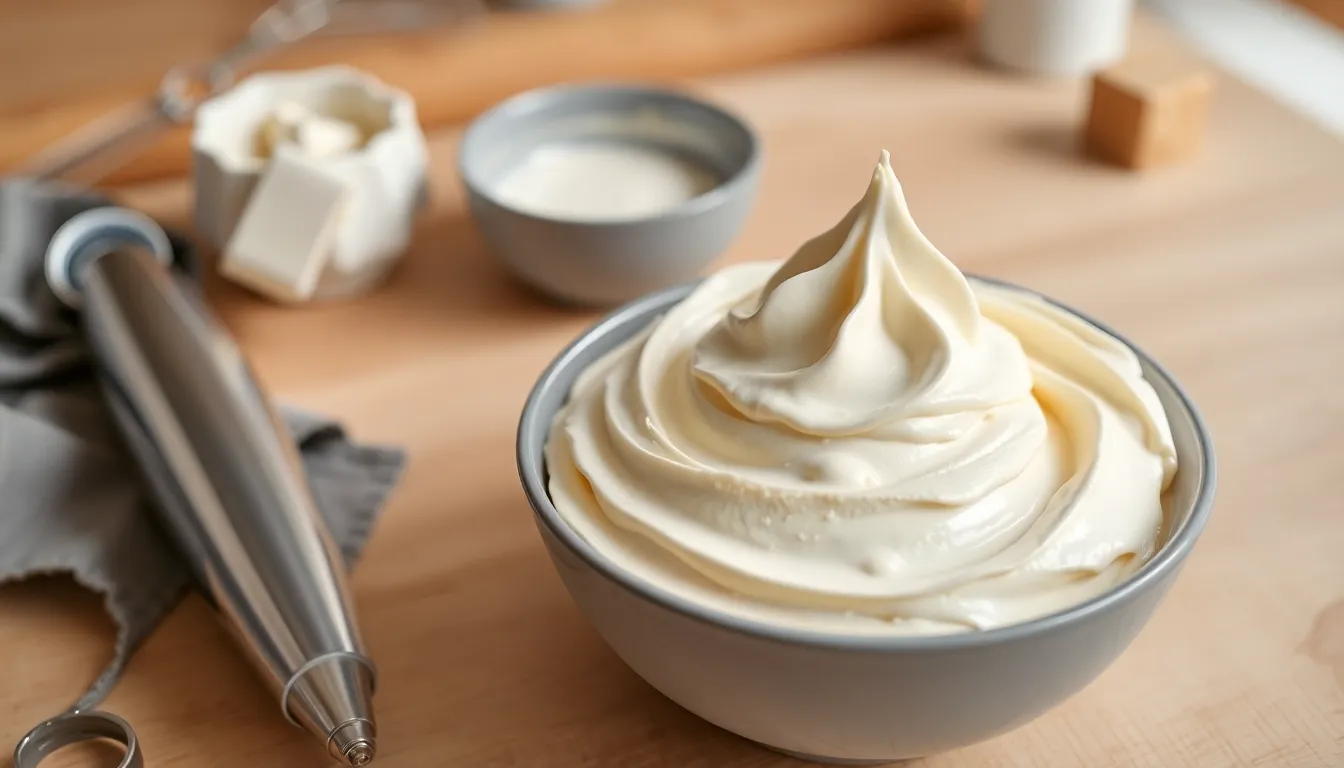
Proper storage ensures our white chocolate buttercream maintains its luxurious texture and flavor for future use. We can store this delicate frosting using different methods depending on how long we need it to last.
Short-Term Storage
We recommend storing white chocolate buttercream in the refrigerator for up to one week for best quality. Place the buttercream in an airtight container or cover it tightly with plastic wrap to prevent contamination and drying out.
| Storage Method | Duration | Temperature |
|---|---|---|
| Refrigerator | Up to 1 week | 35-40°F |
| Room temperature | Up to 1 week | 68-72°F |
Room temperature storage works for up to a week as well, though this timeframe varies depending on our kitchen environment. After refrigeration, we should let the buttercream come to room temperature before re-mixing if it becomes too firm. When the buttercream feels too soft, we can chill it for 10 to 15 minutes and whip again to restore the proper consistency.
Long-Term Storage
Freezing extends our white chocolate buttercream’s life for up to three months without compromising quality. We place the buttercream in an airtight container or ziplock bag with all air squeezed out, then label the container with the date for easy tracking.
To use frozen buttercream, we thaw it overnight in the refrigerator first. After thawing, we let it sit at room temperature for about 30 to 60 minutes before use. Re-whipping the buttercream for one to two minutes restores its smooth consistency and original texture. Using high-quality white chocolate with high cocoa butter content ensures the best flavor and texture retention during storage.
Make-Ahead Tips
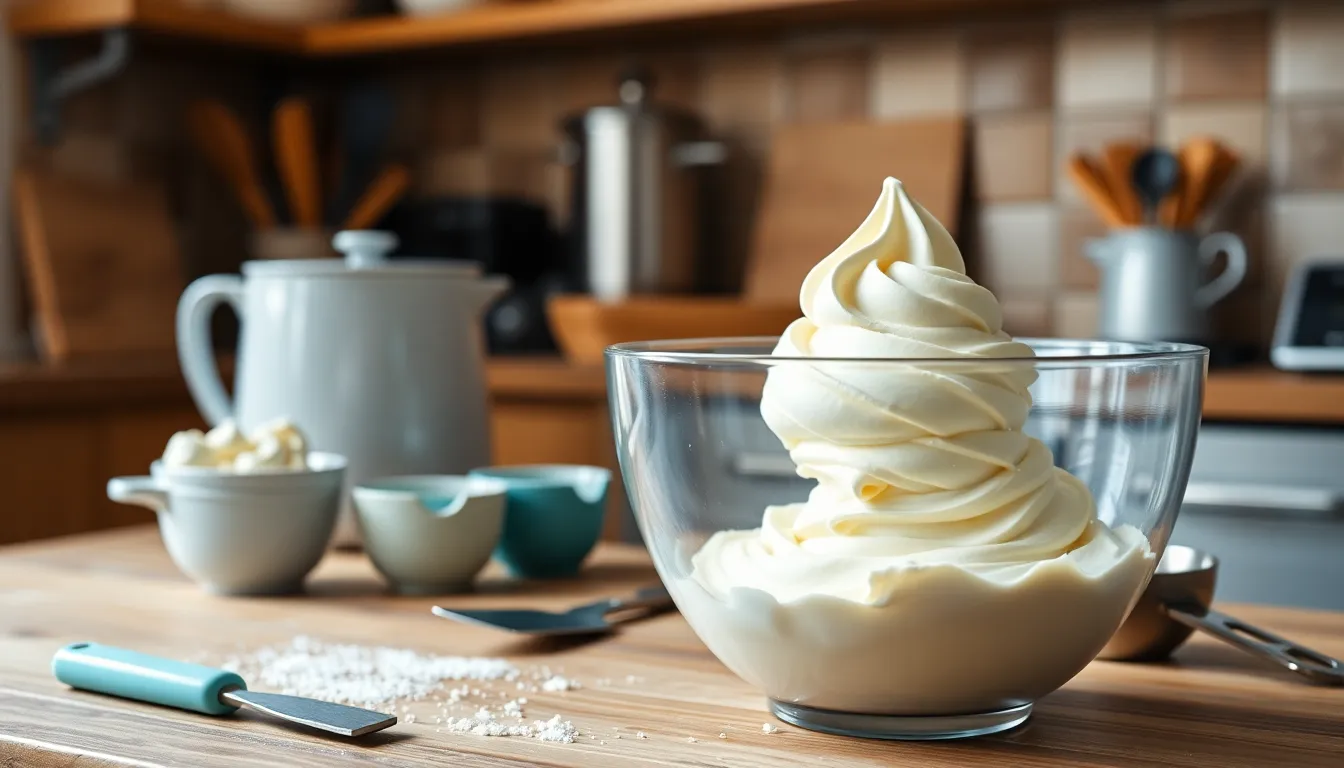
Planning ahead transforms our baking experience by allowing us to prepare this luxurious white chocolate buttercream days or even weeks before we need it. Our make-ahead approach ensures we maintain the frosting’s silky texture and rich flavor while saving precious time during busy baking sessions.
Room Temperature Storage Options
We can store our freshly made white chocolate buttercream at room temperature for up to one day when placed in an airtight container. This short-term storage method works perfectly for maintaining the buttercream’s spreadable consistency without requiring any additional preparation before use.
Refrigeration for Extended Storage
Refrigerator storage extends our buttercream’s life significantly. We transfer the frosting to an airtight container and store it in the refrigerator for up to one week without compromising quality. Before using refrigerated buttercream, we allow it to reach room temperature naturally then briefly rewhip the mixture to restore its light and fluffy texture.
Freezing for Long-Term Planning
Freezing our white chocolate buttercream provides the ultimate make-ahead solution. We place the buttercream in a sealed container and freeze it for up to three months while maintaining excellent quality. To use frozen buttercream, we thaw it overnight in the refrigerator, bring it to room temperature, and rewhip as needed to achieve the original consistency.
Critical Temperature Considerations
Temperature control plays a crucial role in our make-ahead success. We ensure our melted white chocolate has cooled completely before incorporating it into the buttercream to prevent the frosting from becoming greasy or separating during storage. Cold liquids can cause our buttercream to seize or split, so we maintain room temperature ingredients throughout the process.
Consistency Adjustments After Storage
Storage often affects our buttercream’s texture, but we easily remedy this issue. When our refrigerated buttercream becomes too thick, we add small amounts of heavy cream and rewhip until we achieve the desired smoothness. This adjustment technique ensures our buttercream spreads beautifully on fully cooled baked goods every time.
Serving Suggestions
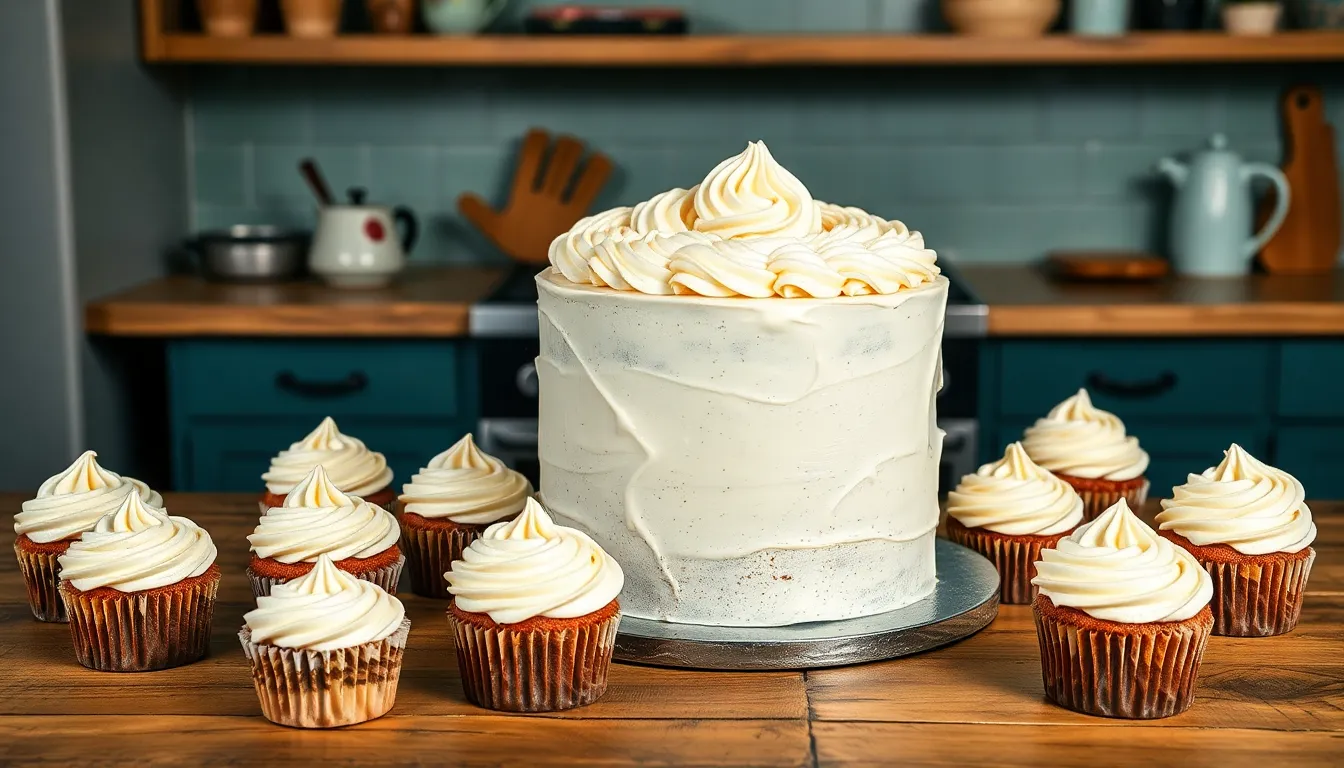
Now that we’ve perfected our white chocolate buttercream recipe and storage techniques, let’s explore the many ways to use this versatile frosting. This luxurious buttercream transforms ordinary desserts into extraordinary treats with its smooth texture and rich flavor.
| Dessert Type | Serving Amount | Best Applications |
|---|---|---|
| Cupcakes | 12-16 cupcakes | Frosting and filling |
| 3-layer 6-inch cake | 1 full recipe | Complete coverage |
| 9×13-inch sheet cake | 1 full recipe | Quarter sheet frosting |
| 2-layer standard cake | 1.5× recipe | Full cake coverage |
Best Uses for White Chocolate Buttercream
We recommend white chocolate buttercream as the perfect complement to lemon cakes where its creamy sweetness balances citrus brightness. Strawberry and banana cakes benefit from the frosting’s rich texture that doesn’t compete with fruit flavors. Our buttercream works beautifully on vanilla and spice cakes by adding depth without overwhelming the base flavors.
Red velvet cakes pair exceptionally well with white chocolate buttercream as an elegant alternative to traditional cream cheese frosting. We love using it as a filling between cake layers combined with raspberry or other fruit fillings for added complexity. Chocolate based desserts and brownies create a delightful contrast when topped with this light colored frosting.
Carrot cake enthusiasts will appreciate how white chocolate buttercream offers a sophisticated twist on classic pairings. Pumpkin and gingerbread treats during holiday seasons become extra special when finished with this creamy frosting. We find it works similarly to vanilla buttercream or cream cheese frosting in most applications while providing a more luxurious flavor profile.
Piping Techniques
We start by ensuring our buttercream reaches the perfect consistency before piping. The mixture should be light and fluffy with no visible air bubbles that could disrupt smooth piping lines. Use a spatula to gently fold the buttercream and remove any trapped air pockets.
Fill your piping bag with the prepared buttercream and twist the top securely to prevent spillage. We recommend selecting star tips for rosettes and borders, round tips for writing and dots, or petal tips for creating realistic flower decorations. Each tip style creates different effects that can transform simple cupcakes into professional looking desserts.
Pipe onto completely cooled baked goods for the best results since warm surfaces can cause the buttercream to melt and lose its shape. Maintain consistent pressure on the piping bag while moving at a steady speed to achieve even designs. We practice on parchment paper first when trying new techniques to perfect our pressure and movement before decorating the actual desserts.
Conclusion
White chocolate buttercream represents the perfect marriage of elegance and simplicity in the frosting industry. We’ve shown you how this luxurious frosting can transform ordinary desserts into bakery-quality masterpieces with just a few quality ingredients and proper technique.
The beauty of this frosting lies in its versatility and make-ahead convenience. Whether you’re planning a special celebration or simply want to elevate your weekend baking we’re confident this recipe will become a staple in your kitchen.
Remember that success comes from patience and attention to temperature details. With proper storage techniques and consistency adjustments you’ll have a go-to frosting that delivers professional results every time. Your cakes and cupcakes will never be the same once you master this creamy indulgent frosting.
Frequently Asked Questions
What makes white chocolate buttercream different from regular buttercream?
White chocolate buttercream combines the creamy texture of traditional buttercream with the delicate sweetness and velvety smoothness of white chocolate. This creates a more sophisticated flavor profile and luxurious texture that enhances cakes and cupcakes beyond standard frosting options.
What ingredients do I need for white chocolate buttercream?
You’ll need 8 oz finely chopped white chocolate, 1/4 cup heavy cream, 1 tsp vanilla extract, 1 cup room temperature unsalted butter, 4 cups sifted powdered sugar, 1/4 cup heavy cream, 1/2 tsp salt, and 2 tbsp milk if needed for consistency adjustment.
What equipment is essential for making white chocolate buttercream?
Key equipment includes a stand mixer or electric hand mixer, microwave-safe bowl or double boiler for melting chocolate, sharp knives for chopping, multiple mixing bowls, rubber spatula for blending, and offset spatula for application. A fine-mesh sieve is optional for ultra-smooth consistency.
How do I fix buttercream that’s too thin or thick?
For thin buttercream, gradually add powdered sugar until desired consistency is reached. For thick buttercream, add room temperature milk one teaspoon at a time while mixing on low speed. Work slowly and patiently to avoid overcorrecting the texture.
How should I store white chocolate buttercream?
Store in an airtight container in the refrigerator for up to one week or at room temperature for one day. For long-term storage, freeze for up to three months. Always bring to room temperature and re-whip before using to restore smooth consistency.
Can I make white chocolate buttercream ahead of time?
Yes, you can prepare it days or weeks in advance. This saves time during busy baking sessions while maintaining silky texture and rich flavor. Just ensure proper storage and re-whip after bringing to room temperature for best results.
What cakes pair best with white chocolate buttercream?
White chocolate buttercream complements lemon, strawberry, banana, red velvet, and carrot cakes exceptionally well. Its delicate sweetness enhances fruit flavors and balances spiced cakes, making it versatile for various dessert combinations and special occasions.
What’s the key to achieving perfect consistency for piping?
Ensure the buttercream reaches the right consistency by allowing melted white chocolate to cool completely before mixing. The frosting should hold its shape but remain smooth enough for easy piping. Adjust with small amounts of cream or powdered sugar as needed.
